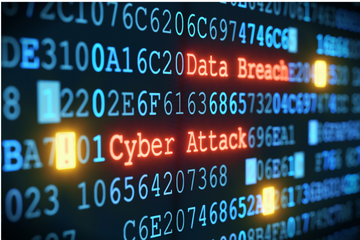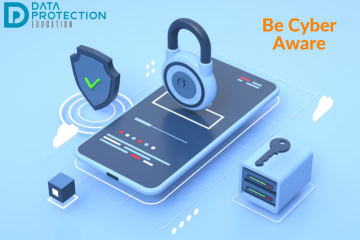We wanted to highlight an organisation called the National Cyber Resilience Centre Group which consists of nine regional centres in the UK that were set up to strenghten the reach of cyber resilience across the business community.
A coalitiion of police, government, large employers and organisations and academia are supporting the growth of the Cyber Resilience Centre Network.
InfoSec / Cyber
Emails sent to the wrong person or emails copied rather than blind copied to customers/parents are the most common data breaches seen and are often because someone is rushing or under pressure.
We've produced a document to provide help and guidance in the event of a cyber attack. The document is part of our Information and Cyber Security Best Practice Area and covers:
This document gives a list of who to contact and what to do just after a cyber attack. It covers:
For those outside the computing world, it feels as though AI (Artificial Intelligence) has suddenly appeared and having a huge impact on the rest of the world. Artificial intelligence is intelligence demonstrated by computers, as opposed to human or animal intelligence. 'Intelligence' encompasses the ability to learn to reason, to generalise and to infer meaning.
Surrey Police are investigating a fraud and computer misuse allegation at AQA, England's largest exam board which follows the recent data breach reported by Cambridgeshire Policy into a data breach with the exam boards at OCR and Pearson. Full article: AQA also hit by exam paper cyber attack.
This article was originally published in January 2023, but has been updated with some additional information, following further ransomware attacks on schools in the UK. Highly confidential documents from 14 schools in the UK have been leaked online by hackers. The Vice Society has been behind a high-profile string of attacks on schools across the UK and the USA in recent months.
This article is one in a series of articles about raising cyber awareness in an organisation. We visit a number of organisations through our data walks and often discuss the use of USB sticks with staff and are told that they are not allowed. Yet we will see them in use during the walk. A verbal/written policy is not the same as prevention and detection. This article will discuss methods for detection and why.
This article is about cyber insurance in the public sector, particularly in relation to schools. Cyber insurance is a special type of insurance intended to protect businesses from internet-based risks, and more generally risks relating to information technology infrastructure and activities. It is also known as cyber liability insurance or cyber risk insurance.
This article is an article about DDoS attacks and is part of a series of articles about different types of cyber attacks. Denial-of-service (DoS) attacks are a type of cyber attack targeting a specific application or website with the goal of exhausting the target system’s resources, which, in turn, renders the target unreachable or inaccessible, denying legitimate users access to the service.
Manchester University was hit by a cyber attack last week, with the possibility that personal data was stolen by the attacker. A statement was made on their website by Patrick Hackett, Registrar, Secretary and Chief Operating Officer:
"Regrettably, I have to share with you the news that the University is the victim of a cyber incident. It has been confirmed that some of our systems have been accessed by an unauthorised party and data have likely been copied. Our in-house
This article is about a recent cyber attack on Leytonstone School. The school in Waltham Forest has been closed since half term after it was targeted and a significant amount of personal data was accessed.
The school is still closed to all pupils other than those taking their GCSEs because the school currently does not have a single central record (SCR), sometimes referred to as a single central register. An SCR is a statutory requirement for all schools and academies i
This article is about firewalls and how they can help in your plan towards being cyber resilient.
What is a firewall? Think of a firewall as an intruder detection system for your organisation's network. It is a virtual barrier between your computer or network and the internet. Its role is to keep an eye on all the incoming and outgoing data, like a security guard watching the entrance to your house or office. The main purpose of a firewall is to protect your
- Be Cyber Aware: Cyber attacks and transparency. A no blame culture
- Cyber Attack: Dorchester School
- Types of Cyber Attacks: Password Attacks
- Be Cyber Aware: Why regular software updates are important
- Cyber Attack: Wiltshire School
- Keeping your IT systems safe and secure
- Why we recommend using PIN codes on printers
- Types of Cyber Attacks: DDoS Attacks
- Types of Cyber Attacks: Phishing
- Types of Cyber Attacks: The Insider Threat
- Why your data is profitable to cyber criminals
- Types of malware and how they are linked to data protection
- A guide to multi-factor authentication
- How a school fought back after a cyberattack
- Types of Cyber Attacks - Credential Stuffing
- January Cyber update - How Can Schools Help Prevent Cyber Attacks?
- The Education sector now at highest risk of cyber attacks
- Cyber Attacks
- Emails – good practice and minimising the risk of a data breach







